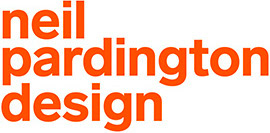Background
The Kiingi Tuheitia Portraiture Award is a competition that encourages emerging Māori artists to create portraits of their tūpuna (ancestors) in any medium. The finalists work was displayed alongside an exhibition outlining the Kiingitanga movement and 161 years of Māori monarchy at the New Zealand Portrait Gallery Te Pūkenga Whakaata in Whanganui-a-Tara / Wellington. Designing a tohu to represent the Kiingitanga was a great honour – but with that honour came a sense of great responsibility to ensure the Kiingitanga was correctly and respectfully represented.
The Kiingi Tuheitia Portraiture Award is a competition that encourages emerging Māori artists to create portraits of their tūpuna (ancestors) in any medium. The finalists work was displayed alongside an exhibition outlining the Kiingitanga movement and 161 years of Māori monarchy at the New Zealand Portrait Gallery Te Pūkenga Whakaata in Whanganui-a-Tara / Wellington. Designing a tohu to represent the Kiingitanga was a great honour – but with that honour came a sense of great responsibility to ensure the Kiingitanga was correctly and respectfully represented.
Response
The design process began with a hui between the Kiingitanga, Gallery, design and marketing teams. While discussing possible directions for the design the kōrero eventually turned to Kiingi Tuheitia’s carved whalebone walking stick Tokotoko Parāoa. We discussed basing the tohu on the ever-present tokotoko and the way it created a connection between Kiingi Tuheitia and te whenua. A link to Tangaroa was also offered in the following pepeha:
The design process began with a hui between the Kiingitanga, Gallery, design and marketing teams. While discussing possible directions for the design the kōrero eventually turned to Kiingi Tuheitia’s carved whalebone walking stick Tokotoko Parāoa. We discussed basing the tohu on the ever-present tokotoko and the way it created a connection between Kiingi Tuheitia and te whenua. A link to Tangaroa was also offered in the following pepeha:
‘He aha te tohu me te koha a Tangaroa ki te iwi’.
‘Will Tangaroa give us a sign, what will be his gift to the people.’
‘Will Tangaroa give us a sign, what will be his gift to the people.’
Thought was also given to portraiture in the Māori tradition – the representation of tūpuna in whakairo – and in turn, the tukutuku that frame the whakairo in wharenui.
The tukutuku pātikitiki symbolises the pātiki (flounder fish), strength of women, provision, abundance, prosperity, plenitude and hospitality. In Māori mythology it is believed that traditions of artistic expression such as carving and tattooing originated from the realm of Tangaroa. The tohu combines this thinking into a simple form in parts – three pātiki diamonds representing head, body and limbs – abstractly. The central negative space is a visual conduit – the connection from above to below. For a Kāi Tahu artist this detail also reflects Aotearoa’s earliest portraits, the rock art of Te Waipounamu, which are often drawn with outlines. The typography sits atop the tokotoko/figure tohu as would the handle of a tokotoko.
The tohu has then been worked back into a versatile pātikitiki pattern which subtly fills the coloured background of the poster designs and other graphic application.
Colourways
The 2021 tohu colourways are inspired by: Te Korekore (black), potential being; Te Whai Ao (red), coming into being; Te Ao Marama (white), the realm of being and light. The alternate colourway is whero (red) and pango (black) over a kōwhai (yellow) pātikitiki pattern. The kōwhai colourway is inspired by the Kiingitanga tohu which is kōura (gold) on pango. Colours for subsequent competitions were also developed and included in the tohu guidelines.
The 2021 tohu colourways are inspired by: Te Korekore (black), potential being; Te Whai Ao (red), coming into being; Te Ao Marama (white), the realm of being and light. The alternate colourway is whero (red) and pango (black) over a kōwhai (yellow) pātikitiki pattern. The kōwhai colourway is inspired by the Kiingitanga tohu which is kōura (gold) on pango. Colours for subsequent competitions were also developed and included in the tohu guidelines.
Typography
The typography takes a traditional but contemporary route with two fonts designed in Te Whanganui-a-tara. Tiempos Headline is a contemporary serif font for editorial typography with an interplay between warm curves and sharp details. It strikes a balance between practicality and elegance – it’s robust and clear, perfect for economic and legible typesetting. Founders Grotesk is a contemporary amalgamation of classic grotesks that resolves the best details from the last century into a large family designed for modern typography.
The typography takes a traditional but contemporary route with two fonts designed in Te Whanganui-a-tara. Tiempos Headline is a contemporary serif font for editorial typography with an interplay between warm curves and sharp details. It strikes a balance between practicality and elegance – it’s robust and clear, perfect for economic and legible typesetting. Founders Grotesk is a contemporary amalgamation of classic grotesks that resolves the best details from the last century into a large family designed for modern typography.
